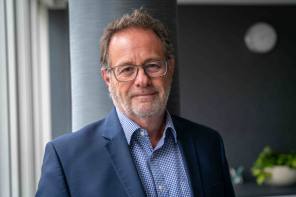

Not bad for someone who does not have a financial advice qualification.
But Lee Hartley, chief executive of the acquisitive Fairstone Group, credits the support in decision-making he gets from a management board of industry experts, including advisers.
Coming from a non-financial advice background, Mr Hartley says this means he can bring a customer perspective to the decision-making.
He became interested in the financial advice sector after many years of launching tech systems on behalf of corporate financial services clients, which then had to be implemented within financial advice companies, networks and wealth management companies.
With Mr Hartley at the helm, it is unsurprising the company also has an acquisition model that is different from the mainstream; considering his tech and business development background.
The downstream buyout model operates by integrating an IFA company, typically over a two-year period, before finally acquiring the business.
It is the opposite of the more traditional buy-and-build structure, where typically the integration of the business is done after the acquisition.
“We think that is the wrong way to grow a people-based business,” Mr Hartley says.
“Integration is hard. And it needs to be done over a long period of time and in a way that does not create business friction post-completion [to the earn out].
“We integrate over two years, sometimes three years, helping that business to grow and then we acquire them at their optimal value.”
This approach means that Fairstone is writing bigger cheques.
As Fairstone helps the business grow its bottom line, this then increases the valuation.
Fairstone re-calculates the purchase consideration every year in the earn out.
So, even if the company continues to grow even after it has acquired the business, Fairstone will re-calculate the sale value, and then share the upside with the sellers.
But Mr Hartley is comfortable with that. Fairstone services 65,000 clients and has 650 staff who operate from 42 sites, although currently they are working from home.
“Across all of the deals that we have completed so far, the current average [sale value] is 112 per cent.
“So the sellers are not just getting 100 per cent premium value, but also they are getting 12 per cent on top of that because of the continuation of organic growth.
“We prefer to write a bigger cheque for a firm that’s fully integrated, that we know everything about, where not just systems and processes are aligned, but also all the people and culture – the important glue that binds an acquisition together.”
Long-term outlook
Mr Hartley says having continuity of capital gives Fairstone’s acquisition strategy a long-term outlook.
In February, Fairstone completed its most recent round of fundraising, which has given it the “fuel” for more acquisitions over the next five years.
Its plan is to onboard 10 companies a year onto the two-year programme and to acquire 10 fully integrated companies each year, although it budgets for one drop-out out of every 10 it brings into the buyout model.
Interestingly, Fairstone’s acquisition strategy is aimed at companies “that do not want to sell today”.
Mr Hartley adds: “That sounds a little strange, but we want to work with firms that have the appetite to grow their profitability and their client base, but do not necessarily have the tools, cash or resources to do that themselves.”
In the two to three-year integration period, either party can pull out of the deal if they are not happy with the acquisition.
Fairstone likes companies that can demonstrate organic growth of around 5 per cent a year on a consistent basis.
It is less keen on companies that do defined benefit transfers, which makes up about 2 per cent of its business.
But such is Fairstone’s ambitious acquisition goals that not even coronavirus can halt it.
“Coronavirus has shone a light on how operationally agile acquisition targets are,” Mr Hartley says.
“And our shopping list definitely has a couple more check-boxes added to it.
“How resilient is a firm, particularly around technology and how agile are they? How robust are their underlying earnings and can that business continue trading effectively in different market conditions?”
Mr Hartley says Fairstone’s operational framework with its centralised back office, compliance and technology resources, gives protection and shelter to smaller businesses feeling the pain of increased regulation and changing legislation.
The Fairstone model might be an easy pitch for business sellers, but not necessarily so for financiers of such a business, which Mr Hartley suggests could be why many have not rushed to replicate this model.
In the early days, Mr Hartley and the company’s other co-founders put in their own cash and brought in early-stage investors who bought into the concept.
“We’d gone through the pain barrier,” Mr Hartley says. “Somebody had to be prepared to go through three, four, five years of investing money before seeing a return and that’s a big leap of faith.
“Our model is based on delayed gratification. We do the hard work first, but don’t see the profit and loss benefit of the acquisition until two or three years down the line.”
But he says the success of the model now speaks for itself, while bringing in the right type of capital into the business has meant there are “no handcuffs” around the business that requires it to deliver an exit to investors within a specific time frame.
Ima Jackson-Obot is deputy features editor of Financial Adviser and FTAdviser



